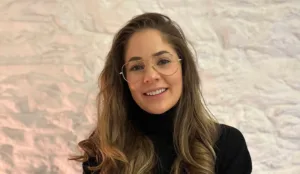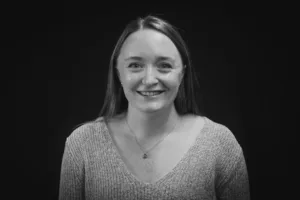‘Agents of Change’ is an ongoing initiative from MiQ (in partnership with New Digital Age) shining a spotlight on the individuals helping build the new Advanced TV (ATV) industry. As the ATV advertising marketplace continues to grow and expand rapidly, the series will feature profiles of key digital media execs who are helping to break down the traditional media buying silos in their own organisations.
In the latest Agents of Change interview, we meet Emma Morris, Head of Investment and Managing Partner at media agency Starcom, part of Publicis Groupe. Here, Emma discusses the growth of ATV and how she is working to break down the traditional silos between her agency’s AV and digital teams…
What are the main challenges to the growth of investment in ATV advertising?
Across our portfolio of clients, we’re seeing huge growth in the CTV space, but there are several challenges with regards to targeting metrics across the industry. The definition of Advanced TV is different and with numerous platforms and publishers in this space, the way they behave is very different. There’s very different terminology used and there’s no single definition of an audience across the different platforms either. At Publicis, we launched PMX Lift which is an end-to-end solution for planning, activating, and measuring addressable video across linear and CTV channels. These products are powered by Epsilon’s Core ID solution delivering improved targeting capabilities, enabling national scale, reach management and a consistent approach to audience for our clients.
Earlier in my career, I was a TV buyer myself and we were trained to look under the bonnet of opportunities, to interrogate audience behaviours and find the insight that can really help power our clients’ campaigns. Thanks to BARB data, we’ve been able to do that in the linear TV space for decades. But in several instances, with ATV, our ability to be able to interrogate audience behaviour has taken a backwards step. Having been brought up on a medium that allows so much transparency, ATV can seem opaque by comparison with limited information available to buyers.
For example, for years we’ve talked about a correlation between Share of Voice and Share of Market. As it stands, it’s virtually impossible to measure what an advertiser’s share of voice is outside of the linear TV space. That’s a huge challenge for agencies and marketeers at present.
Do traditional silos between agency AV and digital teams risk hampering the growth of ATV?
Thankfully, not the way that we’re set up at Starcom. With the growth of ATV, we’ve developed our AV team so that they are both linear and digital experts. It took a while for us to get there, but those guys now sit in what we call an ‘AV hub,’ where they look after linear TV, Video, BVOD, ATV, cinema and audio together. They’re well-rounded, linear and digital professionals. We’re also encouraging our programmatic gurus to collaborate more closely with our AV buyers. Already, they’ve learned so much together about the capabilities of DSPs, the intricacies of tagging and tracking and other ‘digital’ elements to add to their linear skills. Breaking down those silos is an important part of future-proofing our talent.
What more needs to be done at an industry-wide level to reduce the fragmentation of the ATV space for advertisers?
The parties need to get together. There needs to be much more collaboration. Things are definitely moving forwards but with a plethora of new players entering the UK market every month, the overall picture is becoming more complex.
As someone from a linear TV background, I think bridging the gap between traditional TV and digital is the key to our future success. That’s the direction of travel in our industry, and part of my job is to ensure that I’m keeping up to speed with developments. It’s really important to encourage greater transparency when it comes to measurement and interrogation of audiences. It’s about encouraging collaboration and, also, being at the table. That means having conversations with the IAB, the IPA, being part of that BARB TRAG group conversation, to challenge how we behave moving forward and encouraging my colleagues to do the same thing.
What upcoming developments in the UK’s ATV are you most looking forward to?
I’m not as excited about Netflix as some currently are. From what I can see right now, the indications are that the audience numbers are low and the uptake will be slow. Netflix has also priced its offering for advertisers very aggressively. What I’m more excited about is the wider growth of Advanced TV, the ability for us to grow our expertise, and create a larger bank of great ATV case studies which highlight the effect the activity has on our clients’ businesses. Agencies are working to determine the right blend of linear TV and ATV to drive clients’ business outcomes and I think that’s a positive move for our industry.
MiQ, in partnership with New Digital Age, recently published a special insight report, Agents of Change: Shaping the future of Advanced TV advertising, featuring further profiles of key digital media executives who are helping to leverage the incredible potential of ATV. You can download the full report for free here.








